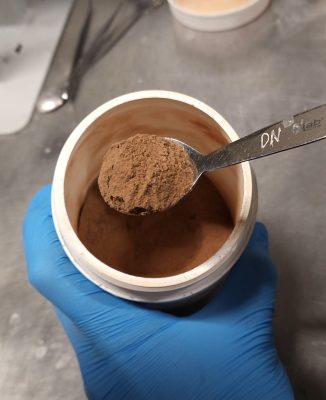Fix stuff, earn big awards? Maybe, if this idea for repair bounties takes off. The group is dubbed the FULU Foundation, for “Freedom from Unethical Limitations on Users,” and was co-founded by right-to-repair activist Kevin O’Reilly and perennial Big Tech thorn-in-the-side Louis Rossman. The operating model works a bit like the bug bounty system, but in reverse: FULU posts cash bounties on consumer-hostile products, like refrigerators that DRM their water filters or bricked thermostats. The bounty starts at $10,000, but can increase based on donations from the public. FULU will match those donations up to $10,000, potentially making a very rich pot for the person or team that fixes the problem.
mars109 Articles
NASA May Have Lost The MAVEN Mars Orbiter
When the orbit of NASA’s Mars Atmosphere and Volatile EvolutioN (MAVEN) spacecraft took it behind the Red Planet on December 6th, ground controllers expected a temporary loss of signal (LoS). Unfortunately, the Deep Space Network hasn’t heard from the science orbiter since. Engineers are currently trying to troubleshoot this issue, but without a sign of life from the stricken spacecraft, there are precious few options.
As noted by [Stephen Clark] over at ArsTechnica this is a pretty big deal. Even though MAVEN was launched in November of 2013, it’s a spring chicken compared to the other Mars orbiters. The two other US orbiters: Mars Reconnaissance Orbiter (MRO) and Mars Odyssey, are significantly older by around a decade. Of the two ESA orbiters, Mars Express and ExoMars, the latter is fairly new (2016) and could at least be a partial backup for MAVEN’s communication relay functionality with the ground-based units, in particular the two active rovers. ExoMars has a less ideal orbit for large data transfers, which would hamper scientific research.
With neither the Chinese nor UAE orbiters capable of serving as a relay, this puts the burden on a potential replacement orbiter, such as the suggested Mars Telecommunications Orbiter, which was cancelled in 2005. Even if contact with MAVEN is restored, it would only have fuel for a few more years. This makes a replacement essential if we wish to keep doing ground-based science missions on Mars, as well as any potential manned missions.
Water On Mars? Maybe Not
We were as excited as anyone when MARSIS (the Mars Advanced Radar for Subsurface and Ionosphere Sounding) experiment announced there was possibly liquid water under the southern polar ice cap. If there is liquid water on Mars, it would make future exploration and colonization much more feasible. Unfortunately, SHARAD (the Shallow Radar) has a new trick that suggests the data may not indicate liquid water after all.
While the news is a bummer, the way scientists used SHARAD to confirm — or, in this case, deny — the water hypothesis was a worthy hack. The SHARAD antenna is on the Mars Reconnaissance Orbiter, but in a position that makes it difficult to obtain direct surface readings from Mars. To compensate, operators typically roll the spacecraft to give the omnidirectional antenna a clearer view of the ground. However, those rolls have been under 30 degrees.
Hackaday Links: October 12, 2025
We’ve probably all seen some old newsreel or documentary from The Before Times where the narrator, using his best Mid-Atlantic accent, described those newfangled computers as “thinking machines,” or better yet, “electronic brains.” It was an apt description, at least considering that the intended audience had no other frame of reference at a time when the most complex machine they were familiar with was a telephone. But what if the whole “brain” thing could be taken more literally? We’ll have to figure that out soon if these computers powered by miniature human brains end up getting any traction.
Hackaday Links: September 14, 2025
Is it finally time to cue up the Bowie? Or was the NASA presser on Wednesday announcing new findings of potential Martian biosignatures from Perseverance just another in a long line of “We are not alone” teases that turn out to be false alarms? Time will tell, but from the peer-reviewed paper released simultaneously with the news conference, it appears that biological activity is now the simplest explanation for the geochemistry observed in some rock samples analyzed by the rover last year. There’s a lot in the paper to unpack, most of which is naturally directed at planetary scientists and therefore somewhat dense reading. But the gist is that Perseverance sampled some sedimentary rocks in Jezero crater back in July of 2024 with the SHERLOC and PIXL instruments, extensive analysis of which suggests the presence of “reaction fronts” within the rock that produced iron phosphate and iron sulfide minerals in characteristic shapes, such as the ring-like formations they dubbed “leopard spots,” and the pinpoint “poppy seed” formations.
Aussie Researchers Say They Can Bring The Iron Age To Mars

Every school child can tell you these days that Mars is red because it’s rusty. The silicate rock of the martian crust and regolith is very rich in iron oxide. Now Australian researchers at CSIRO and Swinburn University claim they know how to break that iron loose.
In-situ Resource Utilization (IRSU) is a big deal in space exploration, with good reason. Every kilogram of resources you get on site is one you don’t have to fight the tyranny of the rocket equation for. Iron might not be something you’d ever be able to haul from Earth to the next planet over, but when you can make it on site? You can build like a Victoria is still queen and it’s time to flex on the French.
The key to the process seems to be simple pyrolysis: they describe putting dirt that is geochemically analogous to martian regolith into a furnace, and heating to 1000 °C under Martian atmospheric conditions to get iron metal. At 1400 °C, they were getting iron-silicon alloys– likely the stuff steelmakers call ferrosilicon, which isn’t something you’d build a crystal palace with.
It’s not clear how economical piling red dust into a thousand-degree furnace would be on Mars– that’s certainly not going to cut it on Earth– but compared to launch costs from Earth, it’s not unimaginable that martian dirt could be considered ore.
Hackaday Links: December 15, 2024
It looks like we won’t have Cruise to kick around in this space anymore with the news that General Motors is pulling the plug on its woe-beset robotaxi project. Cruise, which GM acquired in 2016, fielded autonomous vehicles in various test markets, but the fleet racked up enough high-profile mishaps (first item) for California regulators to shut down test programs in the state last year. The inevitable layoffs ensued, and GM is now killing off its efforts to build robotaxis to concentrate on incorporating the Cruise technology into its “Super Cruise” suite of driver-assistance features for its full line of cars and trucks. We feel like this might be a tacit admission that surmounting the problems of fully autonomous driving is just too hard a nut to crack profitably with current technology, since Super Cruise uses eye-tracking cameras to make sure the driver is paying attention to the road ahead when automation features are engaged. Basically, GM is admitting there still needs to be meat in the seat, at least for now.













